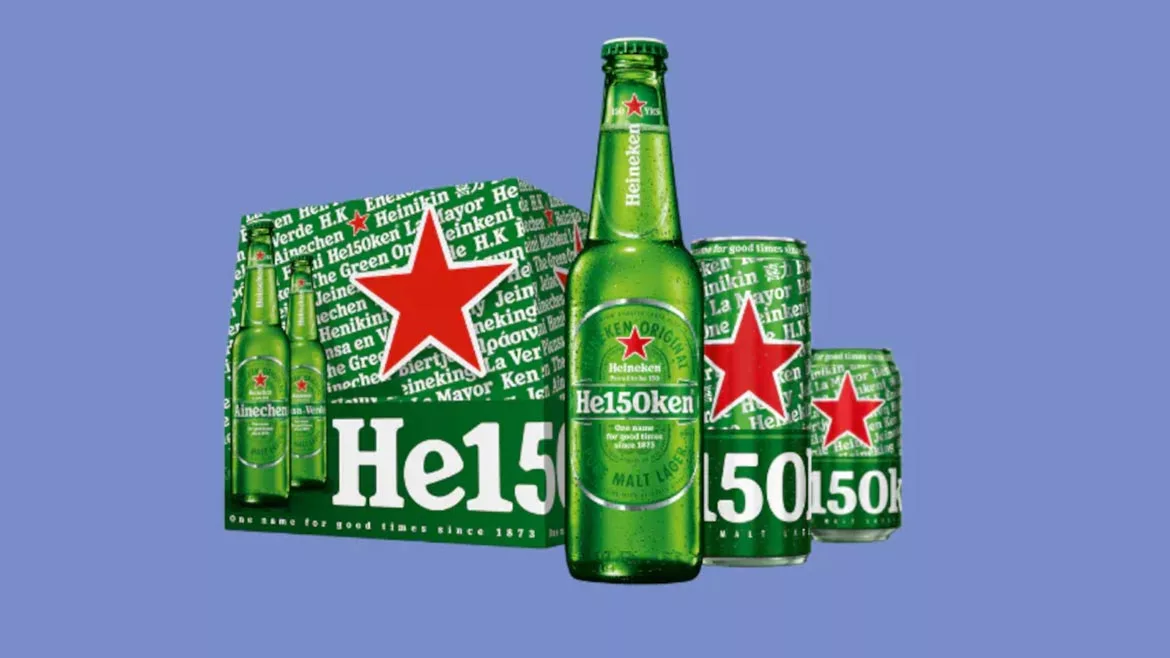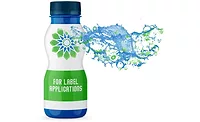Packaging Materials
Labeling materials adapt for a circular future
Innovations support recyclability, sustainability

Image courtesy of MCC Labels
Although best known for his roles in high-profile action movies, it can be said that actor and retired professional bodybuilder Arnold Schwarzenegger further flexed his muscles as the 38th governor of California from 2003 to 2011. On Sept. 27, 2006, Gov. Schwarzenegger, who signed the Global Warming Solutions Act of 2006 creating the nation’s first cap on greenhouse gas emissions, is quoted for saying: “The future is green energy, sustainability, renewable energy.”
Within the beverage industry, when it comes to efforts that support sustainability and a circular economy, experts stress the importance of considering how label materials affect the recyclability of packaging.
“The world produces 141 million tonnes of plastic packaging a year, with 40% of global plastic coming from packaging and only 9% recycled,” says Alena Maran, director of marketing strategy and sustainability at Avery Dennison, Mentor, Ohio. “As an industry, we know we all need to do things differently, and there are growing industrial regulations, company environmental policies and consumer demand contributing to the need for sustainable labeling and packaging.
“Labels may be small, but choosing the right type of label is key to reducing material usage, avoiding disruptions in the recycling process and supporting a circular economy,” Maran continues.
Kimberly Flynn, strategic marketing manager at MCC Label, Rosemont Ill., points to the significant increase in requests from beverage companies for sustainable and recyclable label materials, noting the need for comprehensive labeling solutions.
“Our customers have committed to environmental goals for 2025 and 2030, which are right around the corner,” she says. “Implementing a sustainable or recyclable label is only part of the solution. We encourage our customers to engage us on the whole package ― including the container, label, closure, etc., as we can then recommend the ideal label solution to pair with the container material to meet their goals.
“We have partnerships with environmental organizations, such as the APR and the Ellen MacArthur Foundation to keep updated on what materials are preferred for recyclability,” Flynn continues. “We have recyclable options for most of our label solutions, from wash-off pressure sensitive labels to crystallizable PET shrink sleeves. Our most important request is for early engagement in the project so we can ensure our customers meet their sustainable packaging goals.”
Avery Dennison’s Maran points to the importance of utilizing innovation that helps brands move closer toward a future of circularity.
“To assess the environmental impact of a package it’s important to analyze the full lifecycle — from production to the afterlife of a package,” she explains. “When the product reaches the end of its life, it’s important to consider how the label material will affect the recyclability of the packaging. To ensure that a label does not hinder the recyclability or reusability of the packaging material, brands should choose the right label for the right container.
“For instance, using mono-material constructions (paper package with a paper label) or using adhesives that allow the label to easily be removed during the recycling process, such as Avery Dennison CleanFlake technology for PET or HDPE bottles or wash off labels for glass bottles,” she continues.
Moreover, as most large brands have sustainable packaging targets by 2030 — with many leading brands aiming to make their packaging 100% reusable or recyclable by 2025, — Maran points to the company’s portfolio of labeling solutions that comply with packaging legislation.
“Avery Dennison offers a full portfolio of sustainable labeling solutions to help brands meet their sustainability goals and comply with new packaging legislation,” she says. “From labels made with citrus pulp to filmic constructions that are free from fossil fuels, we have an option for almost every need and requirement.”
Strategies to meet challenges head-on
Aside from helping beverage companies’ meet sustainability goals, experts point to the pressures of SKU proliferation, as well as digital transformations impacting the market.
MCC Label’s Flynn notes that SKU proliferation has demanded more agility and flexibility for label converters.
“To maintain speed to market, we’ve partnered with our customers to develop the best print run strategy and employed programs such as vendor-managed inventories to ensure our customers have the labels they need to meet complex consumer demands,” she says. “Additionally, we have worked closely with our customers to optimize label solutions and find the best fit for brands with multiple SKUs and varying volumes.”
Flynn also points to the company’s range of print technologies, enabling more agility, flexibility.
“We select the optimum print technology for each job, using criteria such as design complexity, SKU volumes, speed, label size, and more,” Flynn explains. “Having the capability and capacity to choose the right print technology for the project allows us the agility we need to respond to pressures of SKU proliferation.
“Whether it’s a project best run on our digital assets, flexo, offset, or gravure, we can accommodate our customers’ changing demands, resulting in an optimized run strategy,” she continues.
Avery Dennison’s Maran points to technological advancements that work toward improved food safety standards and transparency in the market.
“[The] integration of digital ID technologies such as RFID (radio frequency identification) or NFC (near-field communication) can streamline inventory management and facilitate product tracking across the supply chain,” she says. “The introduction of intelligent labels can also offer new experiences and brand interactions.
“For example, we joined hands with the fine wine company, JCB Collection, to leverage NFC-enabled tagging solution within the wine label itself,” Maran continues. “Consumers can simply tap their smartphone on the label to find out more about the wine, including exclusive content, stories, videos, origin and tasting notes. Digital ID technologies will not only help to streamline industrial processes but will unlock new marketing channels too.”
MCC Label’s Flynn also points to innovative labeling, as the ready-to-drink (RTD) beverage market has expanded in recent years.
“For example, we’ve developed a sustainable light-blocking shrink sleeve that works well with RTD coffee and dairy beverages,” she says. “The material blocks more than 99% of light, providing shelf stability and container flexibility. Our customers have been able to choose lighter-weight and less opaque containers because the label provides the light blocking properties.”
Keeping in step with product appeal
When it comes to consumers’ purchasing decisions, experts note that special effects on the label, such as texturing and varnishes, can further draw attention to a product.
“We’ve seen the beverage market gravitate toward more metallic and tactile embellishments to catch consumer attention,” MCC Label’s Flynn says. “Once the consumer picks up the product, they are 80% more likely to purchase it, so our customers are choosing effects such as soft touch laminates, matte coatings, high-build tactile varnishes, foils, and metallic inks to win consumer attention.
“Additionally, we are seeing more creativity in serialization and consumer games and promotions. QR codes and digital watermarks allow consumers to engage with the product label for an enhanced experience online,” Flynn continues. “Social media and influencer endorsements have propelled the popularity of some products, so brands look to quickly get consumers online to share their product experience. For label converters, we can easily add serialized information, QR codes, or a digital watermark to the label graphic.”
Avery Dennison’s Maran points to product appeal as well as sustainability, as being equally important to consumer engagement.
“We know that shelf-appeal is of equal importance to sustainability for many beverage-makers and it’s important to know that these two objectives can co-exist and sustainability does not have to come at the expense of product appeal. It’s important to work with suppliers and designers who understand the latest innovations in this space,” Maran says. “For example, Avery Dennison has just launched a new Neck Label Collection for the drinks industry made with an innovative adhesive that offers a solution to the common problem of ‘neck label detachment.’
“The industry has been struggling with the issue of neck label detachment for years and it has led to compromises by label designers and brands — some have chosen to forgo the neck label altogether in favor of neck-label-less bottle designs, others have opted for defibrated papers or those featuring a lower grammage than the front label, which often appear inferior and can mean that brand images do not appear fully coordinated.”
Complete process
When it comes to selecting labeling materials, experts note the importance of considering the “whole package,” rather than just the labeling.
Noting that the label is only one piece of the package, MCC Label’s Flynn suggests bringing in a labeling partner early on in the process.
“First and foremost, engage your label partner early in the process. We can’t stress this enough,” Flynn says. “Once we understand our customers’ objectives, we can deploy a wide range of expertise from prototyping to R&D, to pre-press and procurement ensuring we choose the right materials to meet the goals.
“Secondly, share with us the full product container… we will select the optimum materials for your full package,” she continues. “Lastly, share the filling process with us so we understand at what point in the process your label will be applied. We’ll ensure that the label material withstands the filling and application equipment while fulfilling the needs and goals of the brand.”
Looking for a reprint of this article?
From high-res PDFs to custom plaques, order your copy today!






